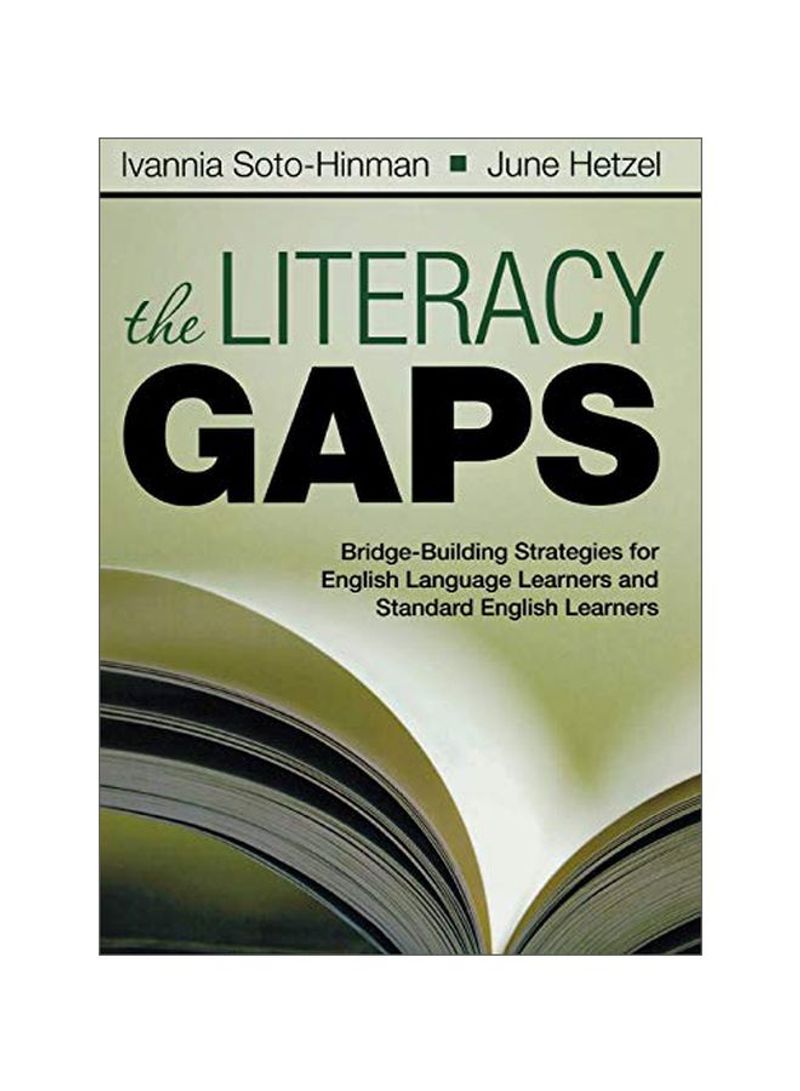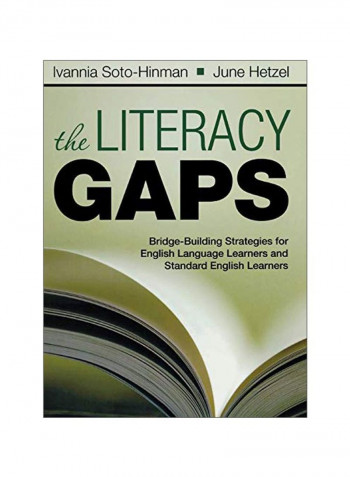The Literacy Gaps: Bridge-Building Strategies For English Language Learners And Standard English Learners Hardcover
Recommend
Sort by
Rating
Date
Specifications
Book Description
The book makes a contribution to the education of English language learners. It provides practical instructional suggestions for teachers of both ELLs and SELs that are informed by a deep understanding of theories of second language and second dialect acquisition and the development of reading and writing proficiencies'-Guadalupe Valdes, Professor of Education, Stanford University 'The concepts of gaps and bridges are clearly articulated up front and provide a well-structured theme that unites the various parts of the text. The use of this structure provides a logical and coherent mechanism for providing a complete picture of the problem-the literacy gap between ELs and native speakers-and a means for addressing this problem'-Kristina Anstrom, Senior Research Scientist, The George Washington University Center for Equity and Excellence in Education Build bridges of support so English language learners can learn alongside their peers! English language learners (ELLs) and standard English learners (SELs) face multiple gaps as they strive to achieve, so educators need to take a holistic, comprehensive approach to bridge those gaps and meet the needs of ELLs and SELs in the classroom. Based on an original, well-researched framework, this much-needed resource provides practical strategies for supporting learning and success for ELLs. The authors provide strategies, examples, and classroom tools to address: - The gap between students and texts: covering word recognition, background knowledge, comprehension, and academic language development - The gap between students and teachers: including socio-cultural differences between teachers and students, and teacher perceptions and expectations - The gap between students and their peers: discussing language proficiency differences, grouping strategies, and grade-level and schoolwide programmes The Literacy Gaps helps educators give ELLs the skills they need to close the most important gap of all: the achievement gap.
ISBN-13
9781412975209
Language
English
Publisher
SAGE Publications Inc
Publication Date
15 Oct 2009
Number of Pages
272
About the Author
Ivannia Soto, Ph.D. Dr. Ivannia Soto is Professor of Education at Whittier College, where she specializes in second language acquisition, systemic reform for English language learners (ELLs), and urban education. She began her career in the Los Angeles Unified School District (LAUSD), where she taught English and English Language Development to a population made of up 99.9% Latinos, who either were or had been ELLs. Before becoming a professor, Dr. Soto also served LAUSD as a literacy coach and district office administrator. She has presented on literacy and language topics at various conferences, including the National Association for Bilingual Education (NABE), the California Association for Bilingual Association (CABE), the American Educational Research Association (AERA), and the National Urban Education Conference. As a consultant, Soto has worked with Stanford University's School Redesign Network (SRN), WestEd, and CABE, as well as a variety of districts and county offices in California, providing technical assistance for systemic reform for ELLs and Title III. Soto has authored and co-authored seven books, including Breaking Down the Wall: Essential Shifts for English Learners' Success, The Literacy Gaps: Building Bridges for ELLs and SELs; ELL Shadowing as a Catalyst for Change, which was recognized by Education Trust-West as a promising practice for ELLs in 2018; From Spoken to Written Language with ELLs; and the Academic English Mastery four-book series. Together, the books tell a story of how to systemically close achievement gaps with ELLs by increasing their academic language production across content areas. Soto is Executive Director of the Institute for Culturally and Linguistically Responsive Teaching (ICLRT) at Whittier College, whose mission it is to promote relevant research and develop academic resources for ELLs and Standard English Learners (SELs) via linguistically and culturally responsive teaching practices. June Hetzel, professor and dean of the School of Education at Biola University, grew up in the culturally and linguistically rich basin of the San Francisco Bay Area in the Franklin McKinley School District in south San Jose. Her childhood background shaped her passion for access for all learners. Her teaching experiences in Los Angeles and Orange Counties, Africa, and Thailand have provided her with insight into working with elementary and secondary students and adults in multilingual, multicultural settings. Additionally, she has enjoyed travel throughout Europe and on a trip to Oxford University, presented The Three Literacy Gaps and Title III of NCLB, co-authored with Ivannia Soto-Hinman, at the Oxford Round Table at Harris Manchester College, Oxford University, upon which the book The Literacy Gaps is based. In partnership with Ivannia Soto-Hinman, the model has been refined for ELLs and SELs, developing into its current form. With 30 years in education, Hetzel remains passionate about literacy. She facilitates local volunteer tutoring partnerships and she and her husband, Geoff, enjoy leading teams of literacy teachers overseas to work with English language learners. A long-time member of the International Reading Association and the Delta Kappa Gamma Society International, Hetzel has authored many literacy resource books and currently freelances for Purposeful Design Publications, serving as a content editor for two textbook series, including the English as a Foreign Language series. She earned her MS in reading education from Cal State Fullerton and her PhD from Claremont Graduate University.
Editor 1
Ivannia Soto
Editor 2
June Hetzel
Editorial Review
This book presents content that is crucial for narrowing the achievement gap and powerful practical instructional strategies for increasing student achievement. -- Yee Wan, Coordinator, English Language Learners Program The strategies are clearly presented and there is just enough research cited to provide the rationale for incorporating ideas into instruction. Any teacher will find this book practical, and the discussions will provide meaningful ideas for study groups at the school site. -- Ron Klemp, Secondary Literacy Coordinator The concepts of gaps and bridges are clearly articulated up front and provide a well-structured theme that unites the various parts of the text. The use of this structure provides a logical and coherent mechanism for providing a complete picture of the problem-the literacy gap between ELs and native speakers-and a means for addressing this problem. -- Kristina Anstrom, Senior Research Scientist The book makes a contribution to the education of English language learners. It provides practical instructional suggestions for teachers of both ELLs and SELs that are informed by a deep understanding of theories of second language and second dialect acquisition and the development of reading and writing proficiencies. -- Guadalupe Valdes, Professor of Education



